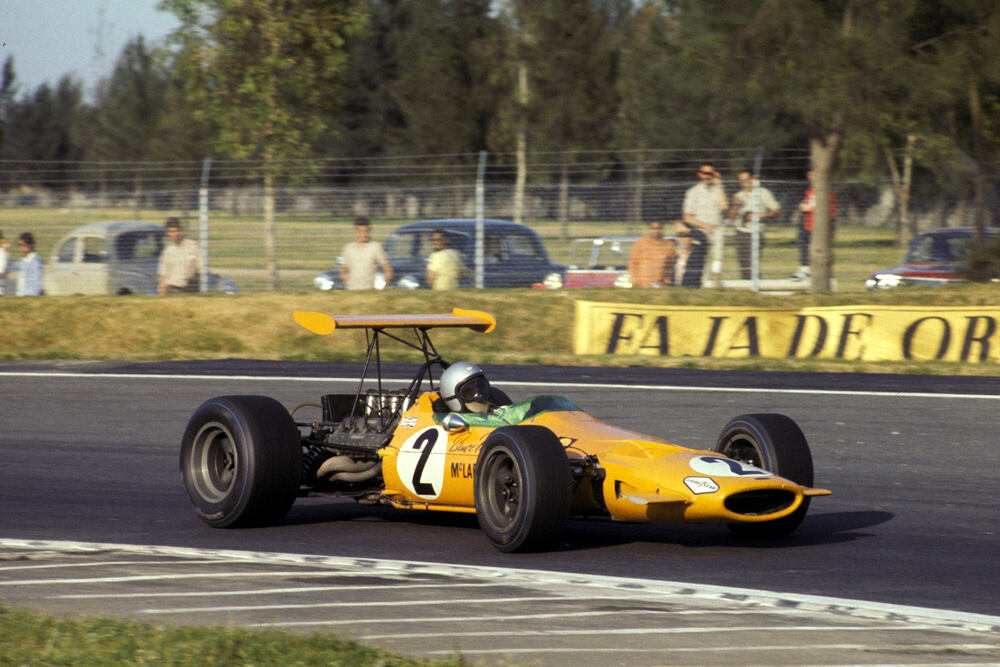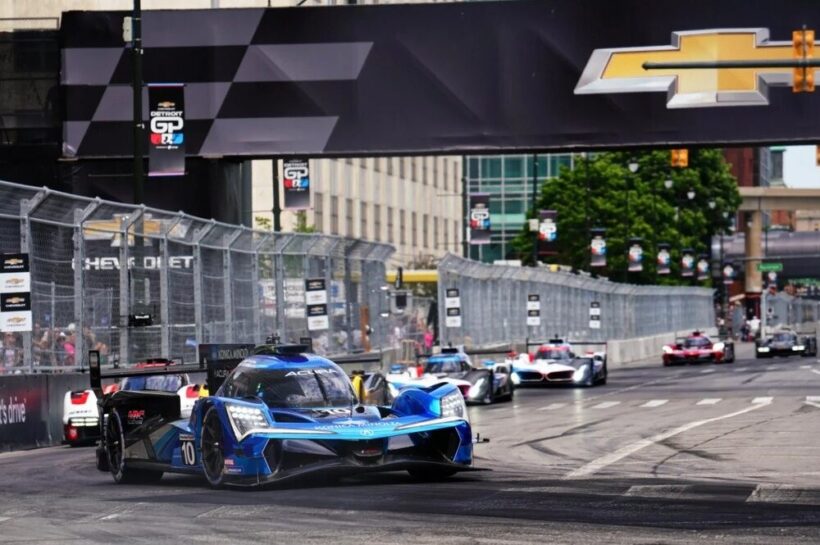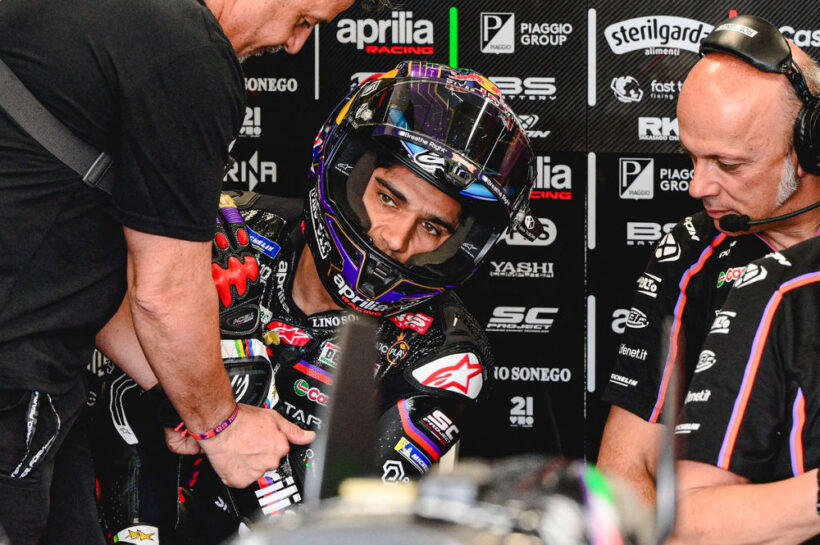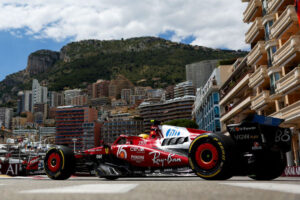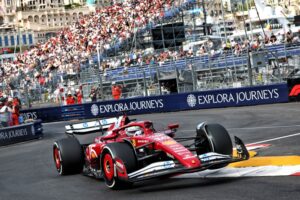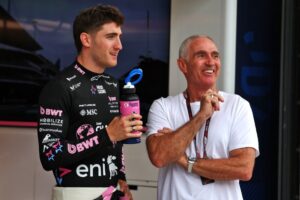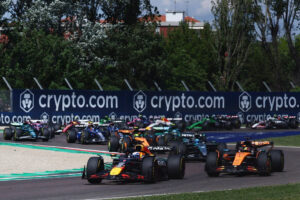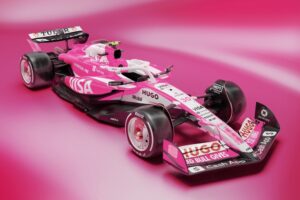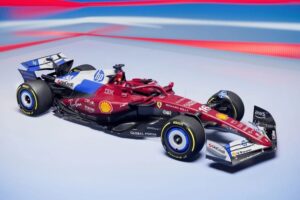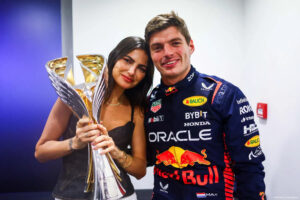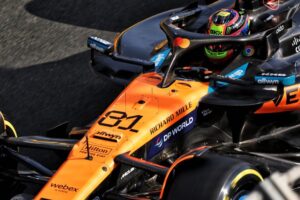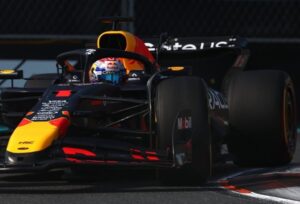The special McLaren F1 Monaco livery features a strikingly elegant “Riviera-inspired” design paying a heartfelt tribute to the legendary M7A, the car that secured the team’s first-ever Formula 1 victory.
The special design, created in collaboration with the team’s official partner OKX will not only grace the Monaco Grand Prix but will also be featured at the subsequent Spanish Grand Prix, offering fans two consecutive race weekends to appreciate the visually evocative and historically significant scheme.
Remembering the McLaren M7A
The McLaren M7A holds a special place in the brand’s history. Debuting in 1968, it was the first McLaren F1 car to wear the now-iconic papaya livery, a bold choice at a time when most teams favored more subdued colors and fans largely watched races in black and white.
The car was the product of the innovative partnership between designers Robin Herd and Gordon Coppuck. It was the first McLaren car to be powered by the revolutionary Ford-Cosworth DFV 3.0-liter V8 engine which debuted in 1967 and quickly became the benchmark power unit in Formula 1.
Delivering around 415 horsepower at 9,500 rpm, the engine was not only powerful but also compact and reliable, allowing it to be used as a stressed member of the chassis.
This design philosophy, pioneered by Lotus, was adopted by McLaren in the M7A which featured a three-quarter length aluminum and magnesium alloy monocoque chassis.
The car’s suspension setup was conventional yet effective with outboard coil springs and dampers both front and rear and a Hewland DG300 five-speed manual gearbox completing the drivetrain.
The McLaren M7A also utilized McLaren’s own magnesium alloy wheels and Goodyear tires, contributing to its competitive edge on the track.
The 1968 season was a turning point for the papaya outfit. After sporadic entries in 1966 and 1967, the team committed to a full championship campaign with the M7A which made its Grand Prix debut at the Spanish Grand Prix, the second race of the season, and quickly showed promise.

Bruce McLaren and teammate Denny Hulme demonstrated the car’s potential with strong finishes, including a fifth and second place in the early rounds.
However, it was at the fourth round, the Belgian Grand Prix at Spa-Francorchamps, that the McLaren M7A truly shone. The race was contested in mixed weather conditions which tested the reliability and handling of all cars.
The M7A’s improvements in these areas paid off as Bruce McLaren capitalized on the misfortunes of others, including the race leader Jackie Stewart who made a late pit stop.
Bruce’s victory made him only the third driver in Formula 1 history to win a Grand Prix in a car bearing his own name – a unique achievement that remains unmatched.
MORE FORMULA 1:
Nine most controversial F1 races of all time
2025 F1 driver salaries: How much money will each driver earn?
Special McLaren F1 Monaco livery serves as a tribute
This year’s Riviera-inspired livery is a masterful blend of past and present. The design draws inspiration from the elegance of the French and Italian Riviera evoking images of sun-drenched coastlines, luxury yachts, and timeless sophistication.
The livery’s clean lines and refined aesthetic are a nod to the M7A’s original look with several subtle touches that pay direct tribute to the historic car.
Among these are the white medallions placed on the rear and top of the chassis which incorporate the race numbers of current drivers Lando Norris and Oscar Piastri.
These medallions are a clear reference to the M7A’s distinctive numbering style which featured a white circle with the driver’s number applied at a 45-degree tilt—a detail beloved by fans of classic Formula 1.
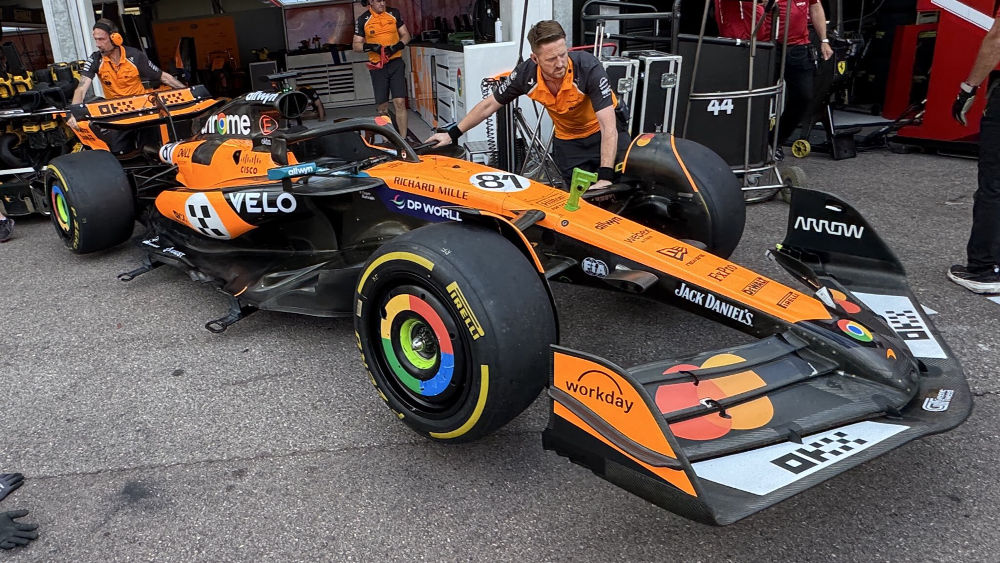
The one-off McLaren F1 Monaco livery also features a black engine cover designed to mimic the low, ground-hugging appearance of the M7A and to give the MCL39 a retro yet contemporary look.
Perhaps the most touching tribute is the inclusion of the Bruce McLaren Motor Racing Team logo from the M7A era, now positioned on the halo of the modern car—an updated location from its original place on the M7A’s steering wheel.
The drivers themselves will not be left out of the tribute. Lando Norris and Oscar Piastri will wear specially designed race suits at the Monaco Grand Prix, echoing the style worn by Bruce McLaren in 1968.
The suits feature a distinctive stripe down the side, as well as the same numbering style and driver tags as the car, creating a cohesive look that honors the team’s heritage.
This attention to detail extends to the overall campaign which is supported by a film featuring Norris and Piastri shot on location in Monaco. The campaign, titled “A New Alternative,” highlights the shared values of innovation and forward-thinking that unite McLaren and OKX.

